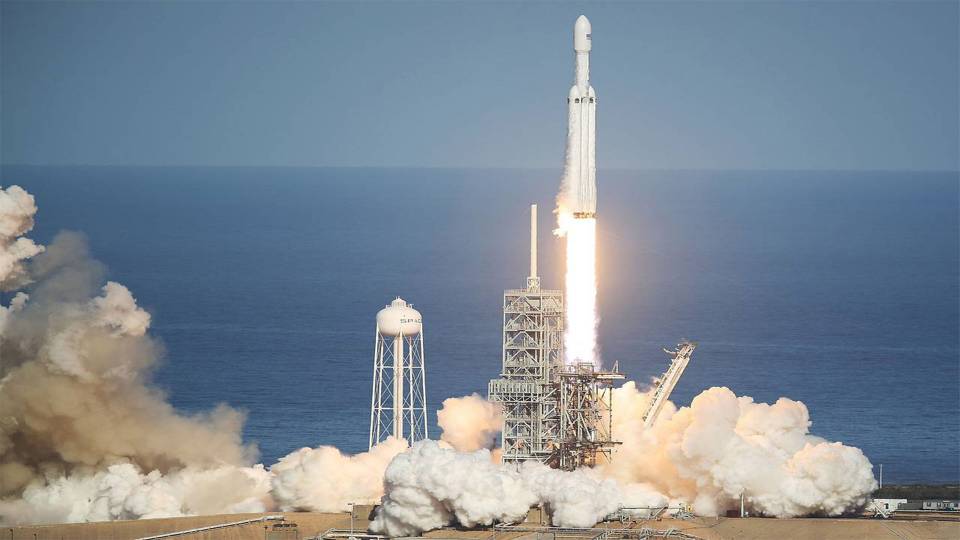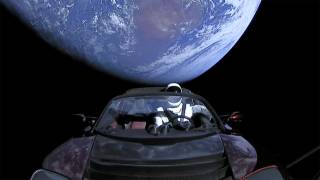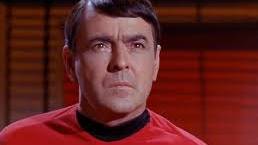SpaceX Launches World’s Biggest Rocket
Space Exploration Technologies Corp. successfully launched the Falcon Heavy rocket Tuesday on its initial test flight, marking another coup for founder Elon Musk.
The blastoff from Florida’s Kennedy Space Center, which was closely followed by the global aerospace industry, capped multiple design changes, years of delays and a roughly $1 billion investment by SpaceX, as the company is commonly called.
Space Exploration Technologies Corp. successfully launched the Falcon Heavy rocket Tuesday on its initial test flight, marking another coup for founder Elon Musk.
The blastoff from Florida’s Kennedy Space Center, which was closely followed by the global aerospace industry, capped multiple design changes, years of delays and a roughly $1 billion investment by SpaceX, as the company is commonly called.
With throngs of spectators on hand, the closely held Southern California company defied industry critics by flying the world’s most powerful rocket since U.S. astronauts landed on the moon almost five decades ago.
The 230-foot rocket, which featured 27 engines with the combined thrust of some 18 Boeing 747 jumbo jets, climbed into clear skies at 3:45 p.m. local time. It carried a Tesla roadster as a dummy payload and publicity stunt.
The flight was a big boost not only for Mr. Musk—who told reporters the day before that “it’s always personal” when it involves the rocket—but also for the fast-growing cadre of entrepreneurs and startups seeking to turn space into more of a commercial marketplace. Following other milestones SpaceX has notched over the years, Falcon Heavy underscores the demise of what used to be the aerospace industry’s reliance on federal dollars for technological breakthroughs.
Initiated and built using private funds, the rocket is a testament to SpaceX’s persistence. It is emerging at a time of limited government demand for, and potential corporate rivalry to provide, such heavy-lift capabilities.
After a preliminary data review, Mr. Musk cracked jokes during a press conference and told reporters the launch “went as well as one could have hoped.” Noting that early on, “I didn’t really think this could work,” he added that the symbolism of the mission, especially the car streaking toward Mars outfitted with a mannequin dressed in a functional space suit, is an image “that is going to get people excited all over the world.”
Tuesday’s launch countdown had been delayed for about two hours because of winds.
As the rocket ascended, its two side boosters shut down, then separated as expected less than three minutes into the flight. All other systems worked apparently without any significant problems, and the cover protecting the payload separated precisely on cue.
“Everything you could want in a test flight,” said one of the narrators on the company’s video of the launch.
The flight demonstrated that the rocket’s design was able to withstand the stresses of so many engines operating simultaneously at supersonic speeds. That was considered one of the biggest hazards, along with separation of the two side boosters in space.
The pair of boosters returned for a vertical landing not far from the historic pad from which Apollo astronauts lifted off for lunar exploits. The central part of the rocket crashed, however, instead of landing vertically as planned on a floating platform.
But because the company previously pulled off some 20 similar landings by spent boosters, the single failure was more of a blemish than a significant setback to Tuesday’s flight.
The flight prompted repeated applause and cheering among SpaceX employees, particularly because Mr. Musk for months had emphasized the risks and played down the likelihood of success. Just the day before, he had said he considered the chances of pulling off the demonstration flight to be roughly 50-50.
The countdown, however, avoided any technical glitches and the Falcon Heavy’s performance could pave the way for it to carry payloads for paying customers within several months. In a congratulatory email, Sen. Bill Nelson, a Florida Democrat who over the years has been most closely associated with traditional, government-run space programs, called it “a spectacular demonstration of the comeback of Florida’s Space Coast and of the U.S. commercial launch sector.” He said it was good news for civil and Pentagon space programs, and “great news for jobs and the economy.”
SpaceX has revolutionized the launch business by vertically integrating operations, slashing prices and reusing the main engines and lower stage of its existing workhorse rockets, the Falcon 9 fleet. But throughout the years, Mr. Musk has remained focused on a longer-term goal: devising mammoth rockets and spacecraft able to eventually establish colonies on Mars.
The Falcon Heavy was conceived around the beginning of the decade to carry both heavy payloads and people into orbit around Earth, and as a stepping stone to the next generation of rockets with enough thrust to roam the solar system. But on Monday, Mr. Musk surprised the aerospace community by disclosing that the company’s current heavy-lift champion, composed of three Falcon 9 boosters, likely will be reserved for unmanned missions.
Still, the Falcon Heavy could provide a cut-rate price to get the heaviest commercial and U.S. government payloads into orbit.
SpaceX has evolved quickly since it was founded in 2002 with a handful of employees working out of makeshift offices in a converted warehouse, near a strip mall in a Los Angeles suburb.
Today, Mr. Musk oversees a payroll with more than 5,000 employees at five locations spanning the U.S. plus three different launch sites. The SpaceX team has sketched out plans intended to get its privately funded reusable vehicles to Mars a decade or more ahead of those being developed by the National Aeronautics and Space Administration.
SpaceX has confronted a string of accidents during its growth. It struggled through three unsuccessful attempts to launch its Falcon 1 rocket, a tiny, underpowered booster compared with later versions, before finally sending one into orbit in 2008. Six years later, the company lost a Falcon 9 rocket carrying cargo to the international space station after exploded shortly after takeoff. A year later, a Falcon 9 exploded on the launchpad during routine ground tests, destroying a corporate communications satellite and casting a pall over SpaceX’s plans as well as the budding commercial space industry.
But Mr. Musk and his team bounced back from all those setbacks, by redesigning part of the Falcon 9’s fuel system and demonstrating resolve to rev up the tempo of launches.
“We did learn our lessons from both of those” Falcon 9 accidents, Hans Koenigsmann, who heads SpaceX’s reliability efforts, told a House panel last month. “We improved the vehicle.”
Had Tuesday’s launch gone badly, commercial and U.S. government customers still would have been able to rely on a number of fallback options to put their heaviest future payloads into orbit.
A joint rocket-making venture between Boeing Co. and Lockheed Martin Corp. , now the Pentagon’s primary launch provider, is developing a less-costly alternative with roughly 30% more power than its existing rockets; it is to fly in 2020. Amazon.com Inc. founder Jeff Bezos is committed to working on a more powerful rocket, called New Glenn, slated to be a direct competitor to both the joint venture and SpaceX.
And Orbital ATK Inc. hopes to use federal funds to help spur development of its own entrant in the competition, with a main stage fueled by solid rocket motors, which could launch by 2021.






















